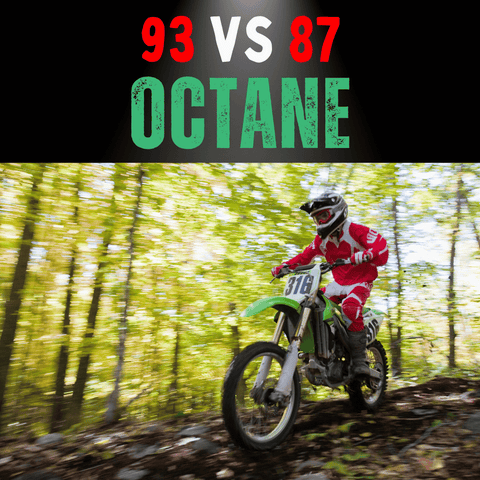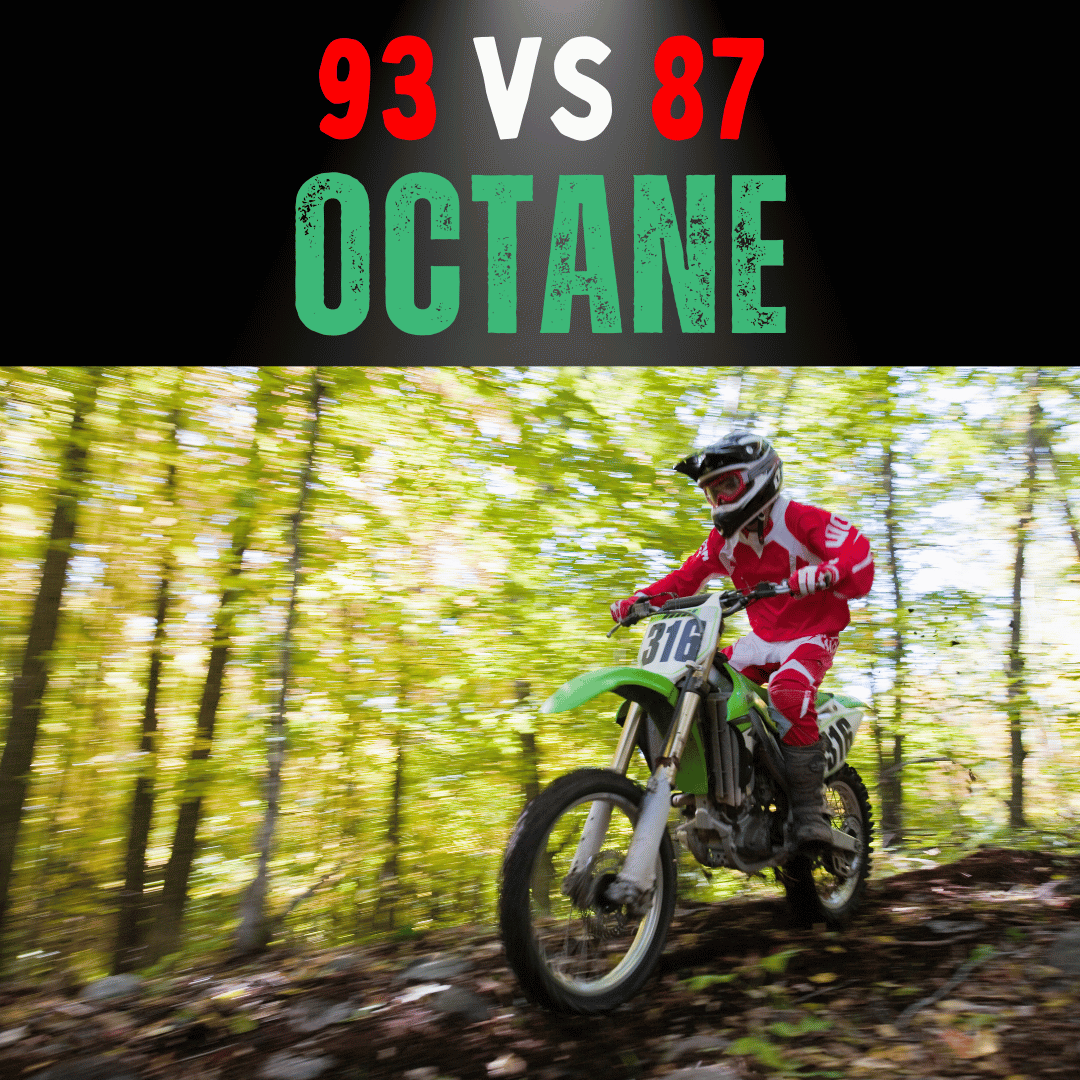
Updated: 14.05.25
Dirt biking, a thrilling sport for all ages, requires the right fuel to keep your dirt bike roaring. Whether you’re a beginner or a pro, choosing the correct petrol ensures peak performance. Explore our kids’ ride-on motorbikes for young riders!
1. What Fuel Does a Dirt Bike Need?
Dirt bike fuel depends on engine type (2-stroke or 4-stroke), typically ranging from 87 to 92 octane. High-performance models may require race fuel for optimal results.
2. Dirt Bike Engine Types
2-Stroke Engines
Popular for motocross, 2-stroke engines deliver high power.
- Features: Simple design, excellent power-to-weight ratio.
- Fuel: Ethanol-free 92–93 octane to prevent detonation and knocking.
- Why Ethanol-Free? Reduces engine damage from low-octane fuels.
Related: Do They Still Make 2-Stroke Dirt Bikes?
4-Stroke Engines
4-stroke engines offer smooth power and better fuel efficiency.
- Features: Balanced delivery, eco-friendly.
- Fuel: 87-octane pump gas for fuel-injected models.
Related: 2-Stroke vs. 4-Stroke Dirt Bike: Which Fits Your Ride?
3. Pump Gas vs. Race Fuel
Pump Gas: Standard fuel (octane <100) from local stations, cost-effective for 4-strokes but less ideal for high-performance 2-strokes.
Race Fuel: High-octane (>100) fuel for pros, offering better throttle response and power but costly for stock engines.
4. Benefits of Race Fuel
- Throttle Response: Faster acceleration.
- Power Boost: Enhances high-compression engines.
- Detonation Prevention: Protects engine health.
Note: Race fuel may be unnecessary for stock engines, making pump gas sufficient for casual riders.
5. Fuel Storage and Longevity
- Stale Fuel: Petrol degrades after months, reducing efficiency and leaving residues.
- Storage Tips: Use fuel stabilizers, store in sealed, petrol-specific containers in a cool, dark place.
6. Fuel Additives
- Purpose: Enhance fuel properties, clean engines, or boost octane.
- Types: Stabilizers, detergents, octane boosters.
- Usage: Follow manufacturer guidelines to avoid overuse.
Related: Petrol or Electric? Which Dirt Bike Is Better?
7. Environmental and Safety Considerations
- Emissions: Race fuels may emit more pollutants; biofuels offer cleaner alternatives.
- Safety: Refuel in ventilated areas, use approved containers, avoid inhaling fumes, and wash off spills immediately.
- Eco-Friendly Riding: Stick to designated trails to minimize environmental impact.
Related: Dirt Bike vs. ATV: 20 Pros and Cons
8. Market Trends
The gasoline dirt bike market is projected to grow over 6% from 2023–2032, driven by durable bikes from KTM, Ducati, and Honda, which held 30% market share in 2022. Youth interest and recreational facilities fuel demand.
| Statistic | Detail |
|---|---|
| Market Growth (2023–2032) | Over 6% |
| Top Players (2022) | KTM, Ducati, Honda |
| Market Share (2022) | ~30% |
9. Choosing the Right Fuel
Match fuel to engine compression: high-octane (92–93) for 2-stroke or high-compression engines, 87-octane for 4-strokes. For competitions, carry race fuel in approved containers, as local stations may lack high-octane options. Additives can boost octane or clean the engine map and ECU, offering a cost-effective alternative to race fuel.
Conclusion
Choosing the right petrol—87-octane for 4-strokes, 92–93 ethanol-free for 2-strokes—optimizes dirt bike performance and longevity. Store fuel properly, use additives wisely, and ride eco-consciously for thrilling, sustainable adventures!
Frequently Asked Questions
Can I use regular unleaded petrol in my dirt bike?
Yes, 87-octane unleaded is fine for most 4-stroke dirt bikes, but 2-strokes often need 92–93 octane. Check your manual.
How long does dirt bike fuel last?
A full tank lasts 2–4 hours of recreational riding. Petrol degrades after months; use stabilizers for storage.
Is race fuel worth it for casual riding?
No, pump gas (87–92 octane) is sufficient for casual riding; race fuel benefits high-performance or racing bikes.
Can fuel additives improve my dirt bike’s performance?
Yes, additives like octane boosters or stabilizers can enhance performance or extend fuel life, but use per guidelines.
How can I reduce my dirt bike’s environmental impact?
Use biofuels, ride on designated trails, and maintain your bike to minimize emissions and environmental disruption.
Get in Touch 🚀
Loved our article on “What Kind of Petrol/Gas Does a Dirt Bike Take?”? Want more biking tips?
We’re here for all your kids’ ride-on toy questions! 🚗💨
Explore more at RiiRoo.com.
Or, chat with us via Live Chat for instant answers!








Share:
10 Tips For Maintaining Your Electric Scooter
Does Leaving The Choke Closed Increase Fuel Consumption?